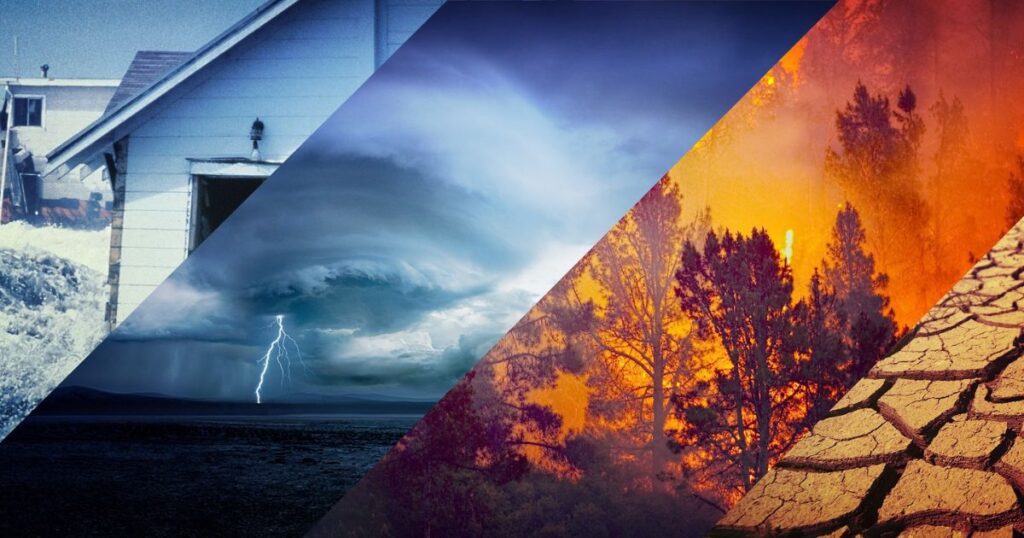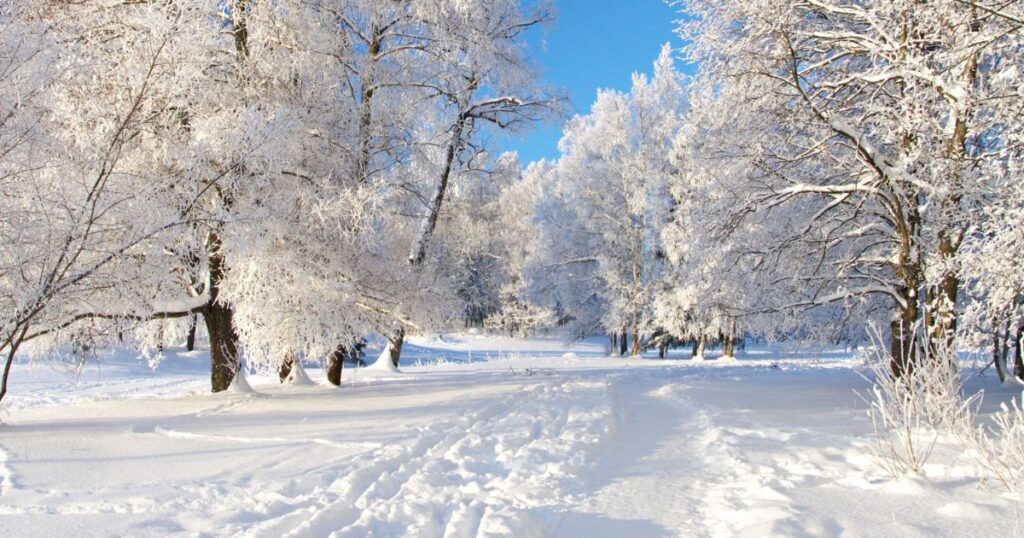The National Weather Service has issued a Winter Weather Advisory for Northern Minnesota and Northwest Wisconsin, urging residents to brace themselves for a powerful winter storm that’s set to bring heavy snowfall, biting winds, and treacherous conditions to the region. This advisory serves as a crucial warning, signaling the impending arrival of a weather system that could disrupt daily life and pose significant risks to public safety.
Affected Areas: The Winter Weather Advisory
The Winter Weather Advisory issued for Northern Minnesota and Northwest Wisconsin encompasses a vast swath of the region, including the following counties and cities:
Minnesota Counties:
- St. Louis County (including Duluth)
- Carlton County
- Lake County
- Cook County
- Koochiching County
- Itasca County
Wisconsin Counties:
- Douglas County (including Superior)
- Bayfield County
- Ashland County
- Iron County
- Burnett County
This advisory is expected to remain in effect from late evening on Thursday until mid-morning on Saturday, giving residents ample time to prepare for the impending winter storm’s arrival.
Winter Storm Warnings
In addition to the Winter Weather Advisory issued for Northern Minnesota and Northwest Wisconsin, the National Weather Service has escalated the situation by issuing Winter Storm Warnings for specific areas within the region. These warnings indicate the potential for more severe conditions, including:
- Blizzard Warnings: Issued when sustained wind speeds of 35 mph or greater are expected, combined with considerable falling or blowing snow, creating dangerous travel conditions and reduced visibility.
- Ice Storm Warnings: Issued when significant accumulations of ice are forecasted, posing a threat to power lines, trees, and making travel extremely hazardous.
Residents in areas under Winter Storm Warnings should take extra precautions and consider postponing any non-essential travel plans until the storm passes.
Impact on Transportation and Services
As the winter storm intensifies, its impact on transportation and essential services is expected to be widespread across the region covered by the Winter Weather Advisory issued for Northern Minnesota and Northwest Wisconsin. Road conditions are likely to deteriorate rapidly, with icy patches and accumulating snow making travel treacherous, if not impossible in some areas.
Authorities are urging commuters to exercise extreme caution or avoid driving altogether during the peak of the storm. School closures and delays are also anticipated, with many districts already announcing plans to cancel classes or shift to remote learning for the safety of students and staff.
Power outages are a possibility as the weight of heavy snow and ice could potentially damage power lines and disrupt electricity supply to homes and businesses. Utility companies are on high alert and prepared to respond promptly to any outages caused by the winter storm.
Real More: Limestone Commercial Real Estate Houston Reviews: Need To Go
Create a More Connected Minnesota
At Amplify Globe, we believe in fostering connections between diverse communities and celebrating the rich tapestry of cultures that make our world so vibrant. While the Winter Weather Advisory issued for Northern Minnesota and Northwest Wisconsin may temporarily disrupt our daily routines, it also presents an opportunity to strengthen the bonds within our communities through acts of kindness, support, and understanding.
How Much Snow?
According to the latest meteorological analysis and weather data, the winter storm prompting the Winter Weather Advisory issued for Northern Minnesota and Northwest Wisconsin is expected to bring substantial snowfall accumulations to the affected areas. Snowfall totals are projected to range from 6 to 12 inches across most of Northern Minnesota and Northwest Wisconsin, with localized amounts of up to 18 inches possible in some areas.
To help visualize the anticipated snowfall, the National Weather Service has provided the following map:

As depicted in the map, the heaviest snowfall is forecasted to occur in the Arrowhead region of Minnesota, encompassing Duluth and the North Shore, as well as portions of Northwest Wisconsin near Superior and Ashland – areas directly affected by the Winter Weather Advisory issued for Northern Minnesota and Northwest Wisconsin.
Some Cool Days Ahead
In addition to the heavy snowfall associated with the Winter Weather Advisory issued for Northern Minnesota and Northwest Wisconsin, this winter storm is expected to usher in a significant blast of arctic air, plunging temperatures well below freezing. Wind chill values could drop to -20°F or lower, posing a risk of frostbite and hypothermia for those who venture outside without proper protection.
Here’s a table illustrating the anticipated low temperatures and wind chill values for selected cities within the region under the Winter Weather Advisory:
| City | Low Temperature (°F) | Wind Chill (°F) |
| Duluth, MN | -8 | -25 |
| Superior, WI | -6 | -22 |
| Grand Marais, MN | -12 | -30 |
| Ashland, WI | -4 | -18 |
Residents in areas affected by the Winter Weather Advisory issued for Northern Minnesota and Northwest Wisconsin are advised to dress in multiple layers, cover exposed skin, and limit time spent outdoors during the coldest periods to prevent cold-related injuries and illnesses.
Programming Note
Due to the severity of the impending winter storm and the Winter Weather Advisory issued for Northern Minnesota and Northwest Wisconsin, local news stations may adjust their programming schedules to provide continuous weather coverage and updates. Be sure to stay tuned to your preferred news sources for the latest information on the storm’s progress, road conditions, and any emergency announcements pertaining to the affected areas.
Potential Effects of Winter Weather
The combination of heavy snowfall, strong winds, and frigid temperatures pose numerous potential hazards and risks during a winter storm of this magnitude, as indicated by the Winter Weather Advisory issued for Northern Minnesota and Northwest Wisconsin. Some of the most significant effects include:
- Reduced Visibility: Blowing and drifting snow can severely limit visibility, making driving extremely dangerous and increasing the risk of accidents within the advisory region.
- Hazardous Road Conditions: Snow accumulation on roadways, coupled with ice buildup, can create treacherous driving conditions, leading to spin-outs, collisions, and potential road closures throughout Northern Minnesota and Northwest Wisconsin.
- Power Outages: The weight of heavy snow and ice can damage power lines, causing widespread power outages that disrupt heating systems, communication networks, and essential services in communities affected by the advisory.
- Roof Collapses: Excessive snow accumulation on rooftops can put significant strain on structures, potentially leading to roof collapses, particularly in older buildings or those with inadequate insulation within the advisory area.
- Disruption of Services: School and business closures, canceled flights, and interruptions to public transportation are likely due to the severe weather conditions brought on by the winter storm prompting the Winter Weather Advisory issued for Northern Minnesota and Northwest Wisconsin.
It is crucial for residents in the affected areas to take the Winter Weather Advisory seriously and take appropriate precautions to ensure their safety and well-being during this winter storm event.
How to Prepare for the Winter Season?

While the impending winter storm prompting the Winter Weather Advisory issued for Northern Minnesota and Northwest Wisconsin may seem daunting, there are several proactive steps you can take to prepare for the winter season and mitigate potential risks. Here are some essential tips to help you stay safe and comfortable:
1. Insulate Your Home
Proper insulation is key to maintaining a warm and energy-efficient home during the colder months, which can be especially important during severe winter storms like the one prompting the Winter Weather Advisory for Northern Minnesota and Northwest Wisconsin. Consider these insulation strategies:
- Seal any drafts around windows and doors using weatherstripping or caulk.
- Add insulation to your attic, walls, and basement to improve heat retention.
- Install storm windows or cover windows with plastic sheeting to create an additional insulating layer.
By ensuring your home is well-insulated, you’ll not only stay cozy but also reduce your energy bills and minimize the risk of frozen pipes during the winter storm and advisory period.
2. Service Your Heating System
Before the winter season kicks into high gear, it’s crucial to have your heating system serviced by a professional technician. This preventative maintenance can help identify and address any potential issues, ensuring your system operates efficiently and reliably when you need it most – especially during severe winter weather events like the one prompting the Winter Weather Advisory issued for Northern Minnesota and Northwest Wisconsin.
During the service, the technician will:
- Clean and inspect the furnace or boiler
- Replace air filters
- Check for any leaks or blockages in the system
- Ensure proper ventilation
Consider upgrading to a programmable thermostat, which can help you save energy and money by automatically adjusting the temperature when you’re away from home or asleep, even during extended periods of severe winter weather.
3. Stock Up on Winter Supplies
Having a well-stocked emergency kit is essential when a Winter Weather Advisory like the one issued for Northern Minnesota and Northwest Wisconsin is in effect. Severe winter storms can lead to power outages, impassable roads, and disruptions to essential services, so being prepared with the right supplies is crucial. Make sure to have the following items on hand:
- Non-perishable food items and bottled water (enough for at least 3 days)
- Flashlights and batteries (extra batteries for all devices)
- A battery-powered or hand-crank radio (to stay informed)
- Well-stocked first aid kit
- Warm blankets and extra warm clothing layers
- Rock salt, sand, or kitty litter (for traction on icy surfaces)
- Matches and emergency candles or lamps
- Cash and essential medication
It’s also advisable to keep a smaller emergency kit in your vehicle when traveling during winter weather advisories. This kit should include items like jumper cables, a shovel, bags of sand or kitty litter, a blanket, and non-perishable snacks.
4. Prepare Your Vehicle
Proper vehicle preparation is crucial for safe travel during winter weather events like the one described in the Winter Weather Advisory issued for Northern Minnesota and Northwest Wisconsin. Take the following steps to winterize your car:
- Install winter tires or studded snow tires for improved traction on snow and ice.
- Check the battery and replace it if necessary, as cold temperatures can strain batteries.
- Top up antifreeze levels and use a winter-grade windshield wiper fluid.
- Inspect the brakes and replace worn pads or shoes for better stopping power.
- Assemble an emergency kit for your car (see above).
It’s also a good practice to keep your gas tank at least half full during winter weather advisories. This can prevent fuel line freezing and ensure you have enough fuel to run the engine and stay warm if you become stranded during the storm.
5. Protect Your Pipes
Frozen pipes are a serious concern during periods of extreme cold, as outlined in the Winter Weather Advisory for Northern Minnesota and Northwest Wisconsin. When water freezes inside pipes, it expands and can cause the pipes to burst, leading to costly water damage and repairs. To prevent this, take the following precautions:
- Insulate exposed pipes, especially those in unheated areas like attics, crawl spaces, and garages.
- Seal any air leaks around pipes with caulk or insulation to prevent cold air from entering.
- Allow a slow trickle of water to run through faucets connected to exposed pipes during extreme cold periods.
- Consider installing heat cables or pipe insulation wraps for added protection.
- If you plan to be away from home for an extended period, shut off the main water supply and drain the plumbing system to prevent freezing.
By taking these steps, you can significantly reduce the risk of frozen and burst pipes during the winter storm covered by the advisory.
6. Practice Fire Safety
As temperatures plummet during winter weather advisories like the one issued for Northern Minnesota and Northwest Wisconsin, many households rely on alternative heating sources like fireplaces, wood stoves, or space heaters to supplement their primary heating system. While cozy, these devices can pose a fire hazard if not used properly. Follow these fire safety tips:
- Keep a minimum three-foot clearance between any heat source and combustible materials like furniture, curtains, or rugs.
- Use a metal or heat-tempered glass screen in front of fireplaces to prevent sparks from escaping and igniting nearby materials.
- Never leave space heaters unattended or place them on combustible surfaces like carpets or furniture.
- Have chimneys and vents professionally inspected and cleaned annually to remove built-up creosote, a leading cause of chimney fires.
- Install smoke and carbon monoxide detectors on every level of your home, and check the batteries regularly.
By practicing fire safety, you can enjoy the warmth of alternative heating sources while minimizing the risk of accidental fires during the winter storm and advisory period.
7. Stay Informed
Staying up-to-date on weather forecasts, warnings, and road conditions is crucial during winter weather events like the one described in the Winter Weather Advisory issued for Northern Minnesota and Northwest Wisconsin. Make use of the following resources:
- Local news stations and weather apps on your smartphone for real-time updates and radar imagery.
- Official websites and social media pages of weather agencies like the National Weather Service, emergency services, and transportation authorities.
- NOAA Weather Radio for continuous weather information and severe weather alerts directly from the National Weather Service.
Being informed allows you to adjust your plans accordingly and take necessary precautions to ensure your safety during the winter storm and throughout the duration of the advisory.
Read Also More Post: Taiwan Self-Driving Gharry: Exploring Taiwan’s Roads
Final Words
By following these essential tips and taking proactive measures, residents of Northern Minnesota and Northwest Wisconsin can better prepare themselves and their families for the challenges posed by the impending winter storm and the conditions outlined in the Winter Weather Advisory issued for the region.
Frequently Asked Questions
What’s the anticipated winter weather for Minnesota this upcoming season?
Get ready for a mix of snow, ice, and freezing temperatures in Minnesota this winter.
Can you explain what a Winter Weather Advisory means?
Ah, good question! So, when you hear about a Winter Weather Advisory, it’s like a heads-up from the weather folks. It means conditions are expected to get a bit hairy. Think snow, ice, or freezing rain. It’s basically a signal to be extra careful if you’re hitting the roads or planning outdoor activities.
Example: Winter Weather Advisory Issued for Northern Minnesota and Northwest Wisconsin.
How will Wisconsin be affected by the upcoming winter?
Wisconsin might experience unpredictable weather due to the influence of El Niño.
What influence does El Niño have on the weather in Wisconsin?
El Niño can bring warmer temperatures and less snow than usual to Wisconsin.
What does it mean when a local meteorologist issues a winter weather watch?
When a winter weather watch is issued, it means people should stay updated on the forecast. They should also prepare for potentially severe winter weather.









